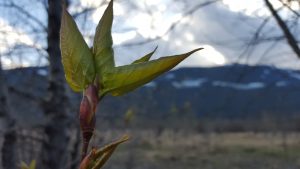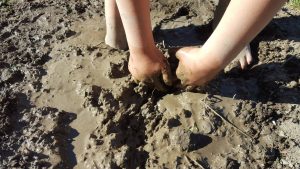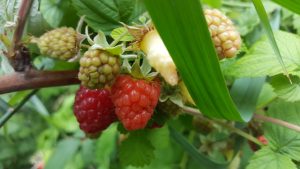The Thursday bunch of flyers is the thickest of all. Tony had remarked on that before, during the time he had a paper route. At first, I thought it was just a random occurrence but now I know it is so. Thursday heralds the approaching weekend via flyers and people follow the trail all the way to the mall (or other individual stores) to shop.
A regular Thursday pile of flyers is thick. The Black Friday pile was the thickest I’ve seen so far, but then again, there’s always a next opportunity. After all, any event can be made into a sale event, says the marketing guru team overlooking our ways from where they can see what the masses are attracted to and even if they are not, what they can be persuaded to buy. Overwhelming irresistible visuals, promises of so much (emptiness.)
Hence our homeschool social study. The boys got three flyers each – one from a food store, one from an electronics store and another from an everything retail store. Then came dissection time!
For the food flyer, I made a few categories: wholesome, local/seasonal, environmentally-damaging, misleading, and processed (yes, there is good/necessary processed and bad processed (if you think Cheesies you are on the right track.) For starters.
As expected, it was an eye-opener, not that my eyes are not open enough. Yes, cynicism seeps in from all corners, but such is the nature of the journey. The boys added a letter here and there, L for local, S for seasonal (seasonal where, Mom?) and then we chatted. Have the ‘why’ answered when you chat with children, they said. I did. The local food is scarce in big stores. Plus, it’s winter – what would seasonal offer? Seasonal in areas that are close enough geographically so that the food does not accrue too high a fossil fuel tag, can we add that up? Can one eat healthy with just seasonal/local offers? People did it for a long time. Would that foster better appreciation for food and reduce waste? Perhaps.
We moved on to the electronics flyer and the ‘everything’ store. We perused the images and as we did so I felt many shades of shame for my fellow humans. How many kinds of laptops and cell phones do we need to have available for consumption when we know the high price in human lives and environmental damage that the extraction of precious metals inflicts?
The huge TV screens – how many kinds do we ‘need’? And if the size is so, where can you fit it? Not in a small room, that’s for sure. And that is before you get the rest of the surround system paraphernalia. Bigger is not better, unless it refers to the size of one’s heart, metaphorically speaking of course. How can kids of today learn about it if they see bricks of flyers every week advertising the opposite?
If we are to find a way out of this environmental mess and wasteland we have created over the last century but more so over the last 50 years, we really need to promote ‘small’ and necessity-based living. Leaving room for what matters (how do we determine that?) is a daunting task for today’s youngsters. There is an army (more in fact) of marketing specialists, ad wizards, and app creators ready to add to the shackles that enslave too many the young minds. Sure it cannot be so dark you may say. Take a look around is what I say; it’s not a pretty sight.
Consumerism is out of hand. What’s ironic of course is that many people find themselves buying things they do not need, or they buy because the deal is too good to pass on. There is an avalanche of things and special offers that keeps on tumbling down, and the fast-paced life allows for little, is any breaks to conjure critical thinking and make sound decisions regarding consumption.
Onto the ‘everything store’ flyer. In the toy section there are board games – how refreshing! – featuring Nintendo games and some big brand names. Subliminal messages? Ah, but the message is rather in our faces. Do we mind? I do. Why not leave games as they are? Why not leave toys unbranded and children’s minds unpopulated with logos? It would only benefit them, leaving enough room to observe, question, wonder, choose.
Truly, there is so much to learn from merely observing the paths we travel during just one day of existence. Looking around, reading, pondering, but most of all, questioning. That is what we want our children to grow up into. Critical thinking tools are too precious and necessary to not be passed on. In a world that is bursting at the seams with too much stuff, but where famine and poverty are rampant in so many parts of the world, leaving our children minds open to see and question becomes a moral obligation.
The conversation expanded in many directions. The boys had questions, doubts, answers, and then more questions. I had some of the answers too, but the point is not for me to answer but for us to converse on the topic. Not just on a regular day of homeschooling but on any day. To delve deeper still by looking around and casting glances that do not succumb our minds to the mainstream flow but rather help us question the happenings of today, which ideally will prompt ideas for change. Spring will not be brought about by one flower, it’s been said countless times, but then again, it’s a start.


 The very puzzling thing that happens when you are a child is that adults often ask what you want to be when you grow up. It’s a question that carries a certain weight except that when you’re little you peep out an answer that is both cute and easily forgotten.
The very puzzling thing that happens when you are a child is that adults often ask what you want to be when you grow up. It’s a question that carries a certain weight except that when you’re little you peep out an answer that is both cute and easily forgotten. All I ask of them is to grow up to be good people. Respectful and carrying compassion for fellow humans, animals and the environment, curious enough to keep on learning and most of all joyous. Whatever path they choose, they should be able to wake up with joy and excitement. That is what comes from adding layers of learning as you go. And most of all that is what happens when the world inside is one that has relevance to who you are. So, you listen and courageously follow the path you feel attracted towards. Profession? Who knows. Things evolve as we do. We grow and open our eyes and then we close them just so we can see lights flickering in the distance. We get inspired by reading, by connecting to people we meet along the way and by seeing places.
All I ask of them is to grow up to be good people. Respectful and carrying compassion for fellow humans, animals and the environment, curious enough to keep on learning and most of all joyous. Whatever path they choose, they should be able to wake up with joy and excitement. That is what comes from adding layers of learning as you go. And most of all that is what happens when the world inside is one that has relevance to who you are. So, you listen and courageously follow the path you feel attracted towards. Profession? Who knows. Things evolve as we do. We grow and open our eyes and then we close them just so we can see lights flickering in the distance. We get inspired by reading, by connecting to people we meet along the way and by seeing places. The point is… what matters is that they keep curious and willing to learn and they do so while being good people. Kind and open-minded and able to think for themselves, willing to accept failure and ready to keep on going even when hills become mountains and the top gets lost in thick fog.
The point is… what matters is that they keep curious and willing to learn and they do so while being good people. Kind and open-minded and able to think for themselves, willing to accept failure and ready to keep on going even when hills become mountains and the top gets lost in thick fog. The reasons why they would learn and understand the multi-faceted process that is food preservation go beyond the rather simplistic ‘because it’s cool to have a homemade jar of jam or…(fill in the blanks)’. In our little school, we are shooting for the big picture. The bird’s eye view if you will.
The reasons why they would learn and understand the multi-faceted process that is food preservation go beyond the rather simplistic ‘because it’s cool to have a homemade jar of jam or…(fill in the blanks)’. In our little school, we are shooting for the big picture. The bird’s eye view if you will. What goes into growing food? Hard work, enriching the soil using natural methods (compost and manure), more hard work and plenty of fresh water, plus a community to sell it to or people to share it with. Conventionally grown food often comes with chemicals many of which can have effects on the brain, endocrine system and they can also increase the risk of allergies and chemical sensitivities. It also comes with a variable-size carbon footprint, depending where it is shipped from. Possibly some low-paid workers in there too. Another level of unaffordability you could say.
What goes into growing food? Hard work, enriching the soil using natural methods (compost and manure), more hard work and plenty of fresh water, plus a community to sell it to or people to share it with. Conventionally grown food often comes with chemicals many of which can have effects on the brain, endocrine system and they can also increase the risk of allergies and chemical sensitivities. It also comes with a variable-size carbon footprint, depending where it is shipped from. Possibly some low-paid workers in there too. Another level of unaffordability you could say.